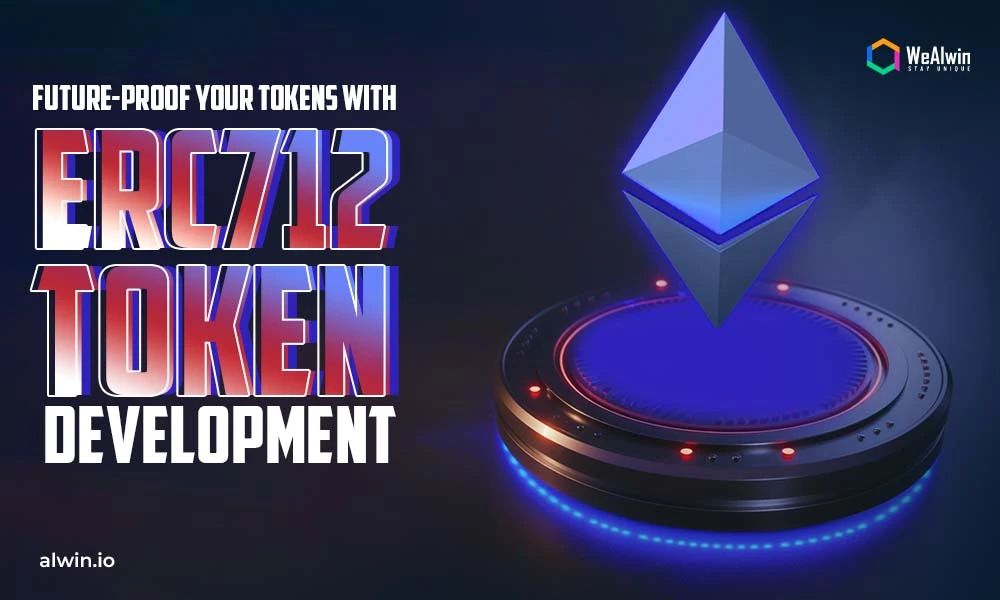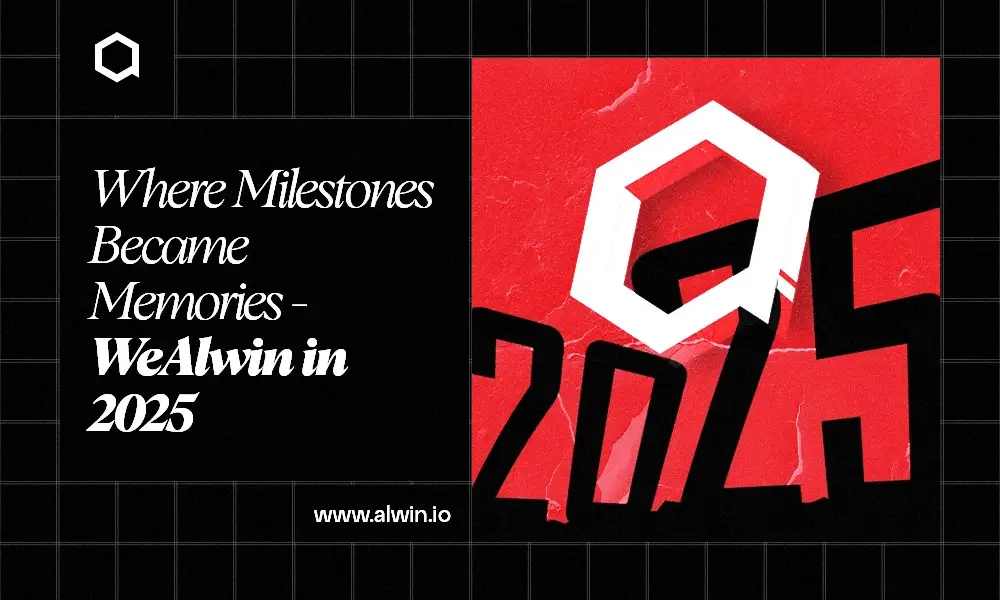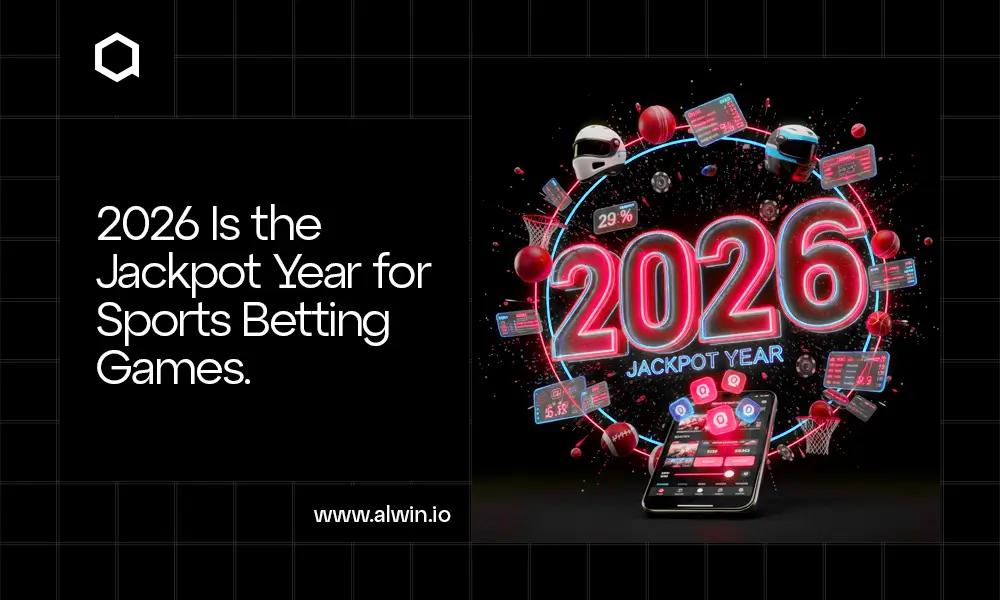ERC712 token development has opened up a world of possibilities for creating unique digital assets, from virtual collectibles to tokenized real-world items. But what exactly are ERC712 tokens, and how can you leverage this technology to revolutionize your business or project?
In this comprehensive guide, we'll dive deep into the world of non-fungible tokens (NFTs), exploring the technical foundations, practical applications, and strategies for success.
By the end of this blog post, you'll have a clear understanding of the potential of ERC712 tokens and how to harness this technology to drive innovation in your industry.
What is an ERC712 Token?
ERC712 tokens are a unique type of non-fungible token (NFT) built on the Ethereum blockchain. They represent ownership of distinct digital assets, such as artwork, collectibles, virtual real estate, or in-game items. Unlike fungible tokens like Bitcoin or Ethereum, each ERC712 token is one-of-a-kind and has its own set of properties and metadata.
Definition and Unique Properties of ERC712 Tokens
ERC712 tokens are defined by the ERC712 standard, which was proposed in 2018 as an extension to the ERC721 standard. The key features of ERC712 tokens include:
Non-fungibility: Each ERC712 token is unique and cannot be exchanged for an identical token. This allows for the creation of truly scarce digital assets.
Customizable metadata: ERC712 tokens can store complex data types, such as images, text, or even 3D models, within the token itself. This metadata is used to define the unique properties and characteristics of each token.
Improved user experience: ERC712 tokens enable a more intuitive user experience when interacting with smart contracts. Users can work with complex data types rather than being limited to simple numbers or strings.
Compatibility with ERC721: ERC712 tokens are fully compatible with the ERC721 standard, allowing them to be traded on existing NFT marketplaces and platforms.
Comparison with Other Token Standards
ERC712 tokens differ from other token standards in several key ways:
ERC20 tokens: ERC20 tokens are fungible, meaning they are interchangeable and have no unique properties. ERC712 tokens, on the other hand, are non-fungible and each one is distinct.
ERC721 tokens: ERC721 tokens are also non-fungible, but they are limited to storing simple data types. ERC712 tokens can store more complex metadata, allowing for greater flexibility and customization.
ERC1155 tokens: ERC1155 tokens are a multi-token standard that can represent both fungible and non-fungible tokens in a single contract. ERC712 tokens are specifically designed for non-fungible tokens with complex metadata.
ERC712 Token Development
Developing ERC712 tokens involves a clear process from defining your token's purpose to deploying it on the blockchain. This section provides a step-by-step guide and by utilizing the recommended tools and programming languages, you can create unique digital assets that stand out in the growing NFT market.
Step-by-Step Guide to the Development Process
Step 1: Define Your Token's Purpose
Before diving into coding, it's essential to determine the purpose of your ERC712 token. Consider the following questions:
- What type of digital asset will your token represent (art, collectibles, gaming items)?
- What unique features or properties will your token have?
- How will users interact with your token?
Step 2: Set Up Your Development Environment
To start developing ERC712 tokens, you’ll need to set up your development environment. Here’s what you’ll need:
- Node.js: A JavaScript runtime that allows you to run JavaScript on the server side.
- Truffle Suite: A popular development framework for Ethereum that simplifies the process of writing and testing smart contracts.
- Ganache: A personal Ethereum blockchain that you can use to deploy contracts, develop applications, and run tests.
Step 3: Write the Smart Contract
Using Solidity, the programming language for Ethereum smart contracts, you can write the ERC712 token contract. Here’s a basic structure to get you started:

This simple contract initializes an ERC712 token and includes a minting function. You can expand upon this by adding custom metadata and additional functionalities.
Step 4: Test Your Contract
Testing is a critical step in the development process. Use Truffle’s built-in testing framework to write tests for your smart contract. Ensure that all functions work as expected and that there are no vulnerabilities.
Step 5: Deploy Your Contract
Once testing is complete, you can deploy your ERC712 token to the Ethereum mainnet or a testnet (like Rinkeby or Ropsten) using Truffle. Make sure to have some Ether in your wallet to cover the gas fees for deployment.
Step 6: Interact with Your Token
After deployment, you can interact with your ERC712 token through a web interface or a decentralized application (dApp). Use libraries like Web3.js or Ethers.js to connect your frontend to the Ethereum blockchain.
Technical Aspects of ERC712 Development
Understanding the technical aspects of ERC712 token development is essential for creating unique digital assets. This section covers the structure of ERC712 smart contracts, the processes for minting and transferring tokens, and the importance of defining metadata.
Structure of ERC712 Smart Contracts
ERC712 tokens are built on the ERC721 standard, inheriting its basic structure while adding new features. Key components include:
- Metadata Handling: ERC712 tokens must include a way to store and access metadata, which describes the unique properties of each token. This metadata can include information such as the token's name, description, and image URL.
- Token Identification: Each ERC712 token is assigned a unique identifier, allowing it to be distinguished from other tokens. This uniqueness is what makes them non-fungible.
- Royalty Features: ERC712 tokens can incorporate royalty mechanisms, allowing creators to earn a percentage of sales whenever their tokens are resold. This feature supports artists and creators by providing ongoing revenue opportunities.
Minting and Transferring Tokens
Minting refers to the process of creating new ERC712 tokens. This typically involves a function that allows users to generate a new token and assign it to their wallet address. The minting process usually requires specifying the token's metadata, which is linked to the newly created token.
Transferring tokens involves changing the ownership of a token from one address to another. This process is crucial for trading and selling tokens on various platforms. The transfer mechanism ensures that the new owner receives the token securely and that the previous owner relinquishes their rights to it.
Defining Metadata and Tokenization
Metadata is critical for ERC712 tokens as it provides detailed information about each token. This can include attributes like the token's title, description, image, and any other relevant data that helps define its uniqueness and value. Properly structured metadata enhances the user experience and facilitates trading on marketplaces.
Tokenization is the process of converting real-world or digital assets into unique tokens on the blockchain. ERC712 tokens enable the tokenization of various items, such as artwork, collectibles, virtual real estate, and in-game assets. By tokenizing these assets, they become easily tradable and verifiable on the blockchain, opening up new markets and opportunities for creators and investors alike.
Business Applications of ERC712 Tokens
ERC712 tokens represent a significant advancement in the realm of non-fungible tokens (NFTs), enabling a variety of business applications that leverage their unique properties. This section explores the monetization models, legal considerations, and marketing strategies associated with ERC712 tokens, providing insights into how businesses can effectively utilize this technology.
Monetization Models and Strategies
ERC712 tokens offer multiple avenues for monetization, allowing creators and businesses to generate revenue in innovative ways:
Direct Sales: Creators can sell their ERC712 tokens directly to consumers through online marketplaces or their platforms. This straightforward approach allows for immediate revenue generation.
Royalties: A key feature of ERC712 tokens is the ability to implement royalty structures. This means that creators can earn a percentage of sales every time their token is resold, providing a continuous revenue stream and encouraging ongoing engagement.
Auctions: Hosting auctions for ERC712 tokens can create excitement and competition among buyers, driving up the sale price. Platforms like OpenSea and Rarible facilitate auction-style sales, allowing creators to maximize their profits.
Token Bundling: Creators can bundle multiple ERC712 tokens into a single offering, providing added value to buyers. This strategy can be particularly effective for collectibles or themed digital assets.
Subscription Models: Businesses can explore subscription-based models where users pay a recurring fee to access exclusive ERC712 tokens or content. This approach fosters community and loyalty among users.
Legal Considerations and Compliance
Navigating the legal landscape is crucial when developing and selling ERC712 tokens. Here are some key considerations:
Intellectual Property Rights: Ensure that you have the necessary rights to the content represented by your ERC712 tokens. This includes obtaining permission from artists or creators if you are tokenizing their work.
Regulatory Compliance: Depending on your jurisdiction, ERC712 tokens may be classified as securities or other regulated assets. It's essential to understand the legal framework governing digital assets in your area and ensure compliance with relevant laws.
Tax Implications: Be aware of the tax implications associated with buying, selling, and trading ERC712 tokens. Consult with a tax professional to ensure compliance and proper reporting.
Marketing Strategies for ERC712 Tokens
Effective marketing is essential for the success of ERC712 tokens. Here are some strategies to consider:
Build a Strong Brand: Establish a recognizable brand identity that resonates with your target audience. This includes creating a compelling narrative around your tokens and their unique value proposition.
Leverage Social Media: Utilize platforms like Twitter, Instagram, and Discord to engage with potential buyers and build a community around your tokens. Share behind-the-scenes content, updates, and success stories to keep your audience informed and excited.
Collaborate with Influencers: Partnering with influencers in the NFT space can help amplify your reach and credibility. Influencers can introduce your tokens to their followers, driving interest and sales.
Host Events and Giveaways: Organizing virtual events, such as live auctions or Q&A sessions, can create buzz around your ERC712 tokens. Consider hosting giveaways to incentivize participation and attract new users.
Conclusion and Future Outlook
ERC712 tokens have the potential to significantly change the landscape of digital assets and non-fungible tokens (NFTs). Their unique features enable innovative applications in various industries, including art, gaming, and real estate.
As businesses and creators explore ERC712 tokens, they can take advantage of diverse monetization strategies, establish strong legal frameworks, and use effective marketing techniques.
Looking to the future, we can expect trends such as greater integration of ERC712 tokens in mainstream applications, advancements in tokenization technology, and a focus on sustainability within the NFT space. As the market evolves, more sophisticated use cases will emerge, fostering collaboration among creators, brands, and platforms.
At WeAlwin Technologies, an Ethereum Token Development Company, we are dedicated to helping you navigate the world of ERC712 token development. Whether you want to create unique digital assets or explore new business models, our expert team is ready to assist you.
Contact us today to unlock the full potential of ERC712 tokens for your business!



